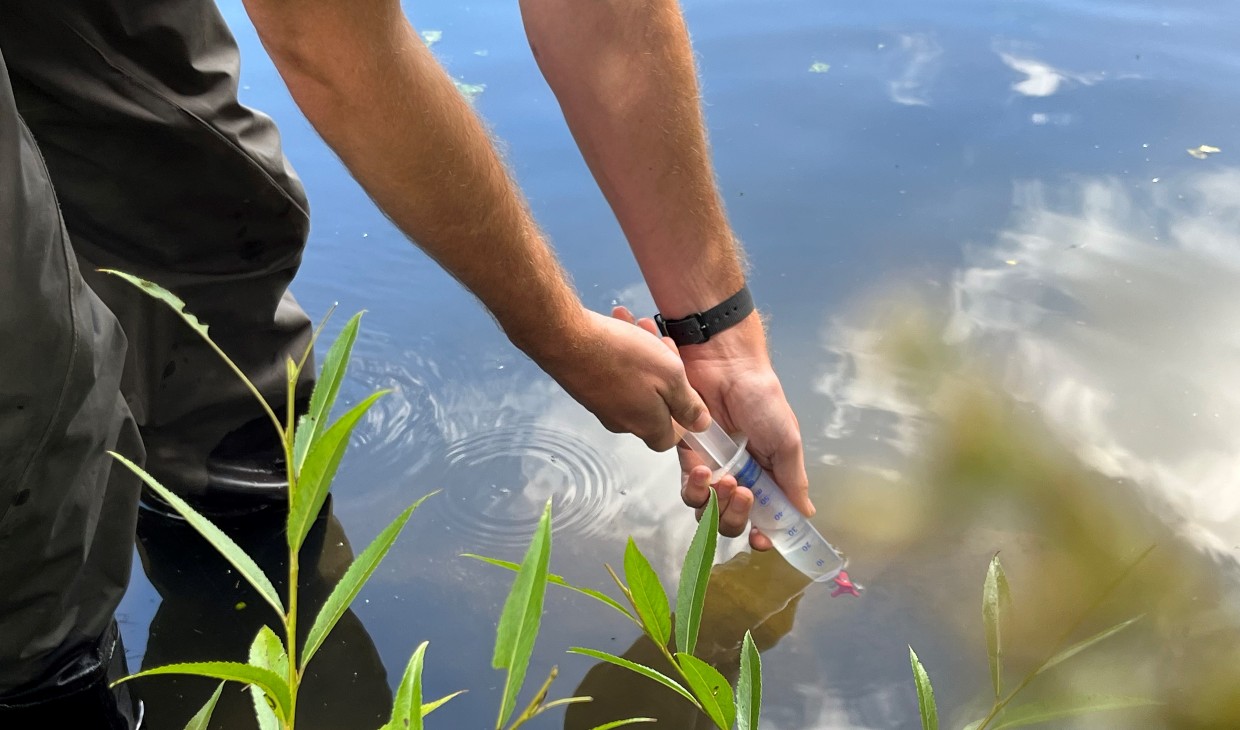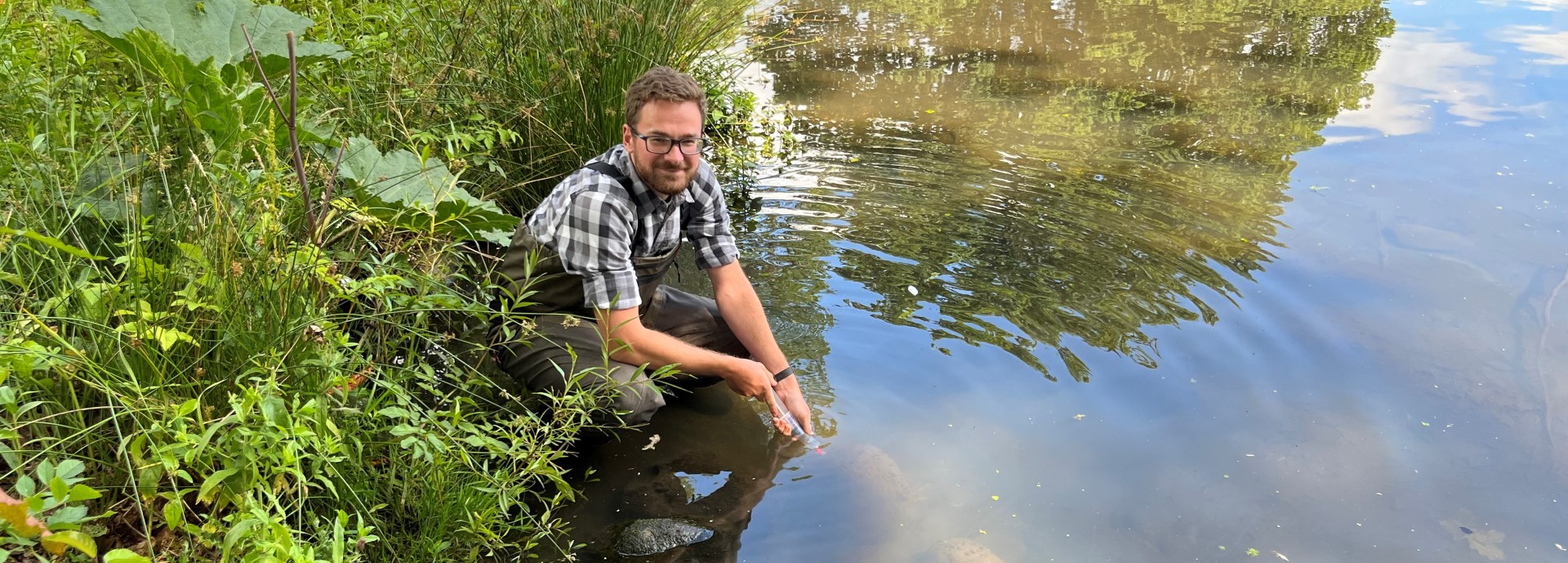Greenhouse gas emissions from ponds in Scotland have been measured by a University of Stirling scientist as part of a major new international study.
Dr Alan Law, Lecturer in Nature-Based Solutions, measured methane and carbon dioxide emissions from ponds in Auchinlea Park, Queen’s Park, Maxwell Park, Robroyston Park and at Bingham’s Pond, all in Glasgow.
Dr Law, who is from Glasgow, took to the water on a kayak to collect gas samples, drawing some interest from locals who were curious about his work.
He said: “When I was out in the water in my kayak, I would get people shouting at me from the water’s edge, asking me what I was up to. Fortunately, most of them were friendly and it gave me an opportunity to talk to people about how ponds across the world emit significant amounts of greenhouse gases into the atmosphere, contributing to climate change.”
 Dr Alan Law using sampling kit at the University of Stirling campus
Dr Alan Law using sampling kit at the University of Stirling campus
There could be billions of shallow lakes and ponds on Earth, but a lack of mapping systems makes it hard to know how many exist.
It is estimated that shallow lakes and ponds may contribute 5% of the global methane emissions to the atmosphere but without accurate measurements across many water bodies, the true number could be as little as half or as much as twice that percentage.
The new study, led by Cornell University’s College of Agriculture and Life Sciences, is an important step towards calibrating climate models so they better predict emissions from inland waterbodies.
The research saw scientists measure emissions from 30 small lakes and ponds of one acre or less in temperate areas of Europe and North America. The ponds in Glasgow sampled by Dr Law were the only Scottish locations.
Dr Law, who is a co-author of the study, said: “I sampled each pond three times in three locations, including the deepest point, and then two locations on opposite ends. I then analysed the samples in laboratories at the University of Stirling and sent data to Cornell University in the United States.
“The study helps us understand the drivers of greenhouse gas concentrations, and importantly, what makes some ponds more variable in their concentrations. This is important because carbon dioxide and methane act as greenhouse gases in the atmosphere, trapping heat that warms the planet and changes the climate over time.”
The paper, ‘Spatial and temporal variability in summertime dissolved carbon dioxide and methane in temperate ponds and shallow lakes’, was published in the journal Limnology and Oceanography.

